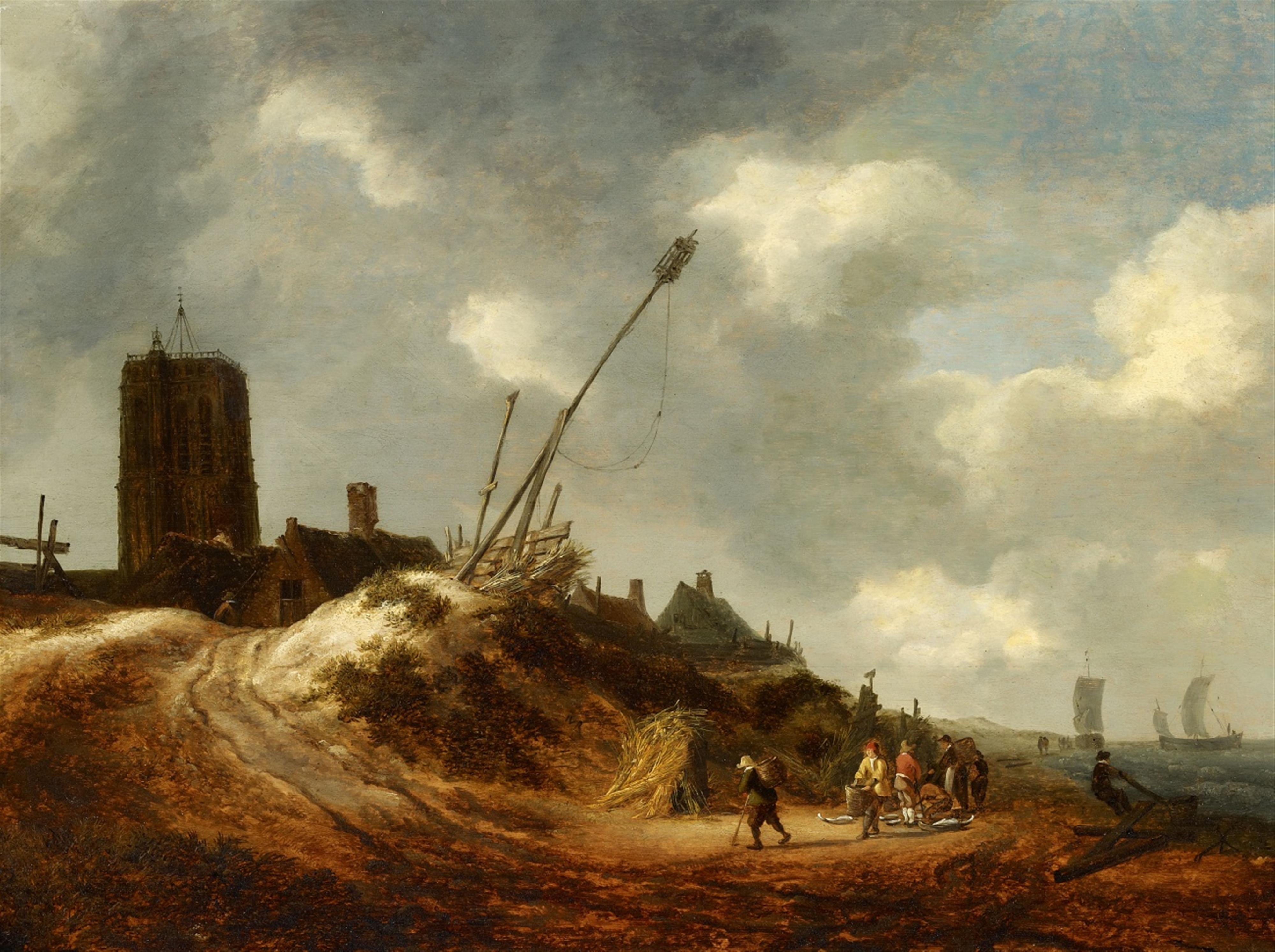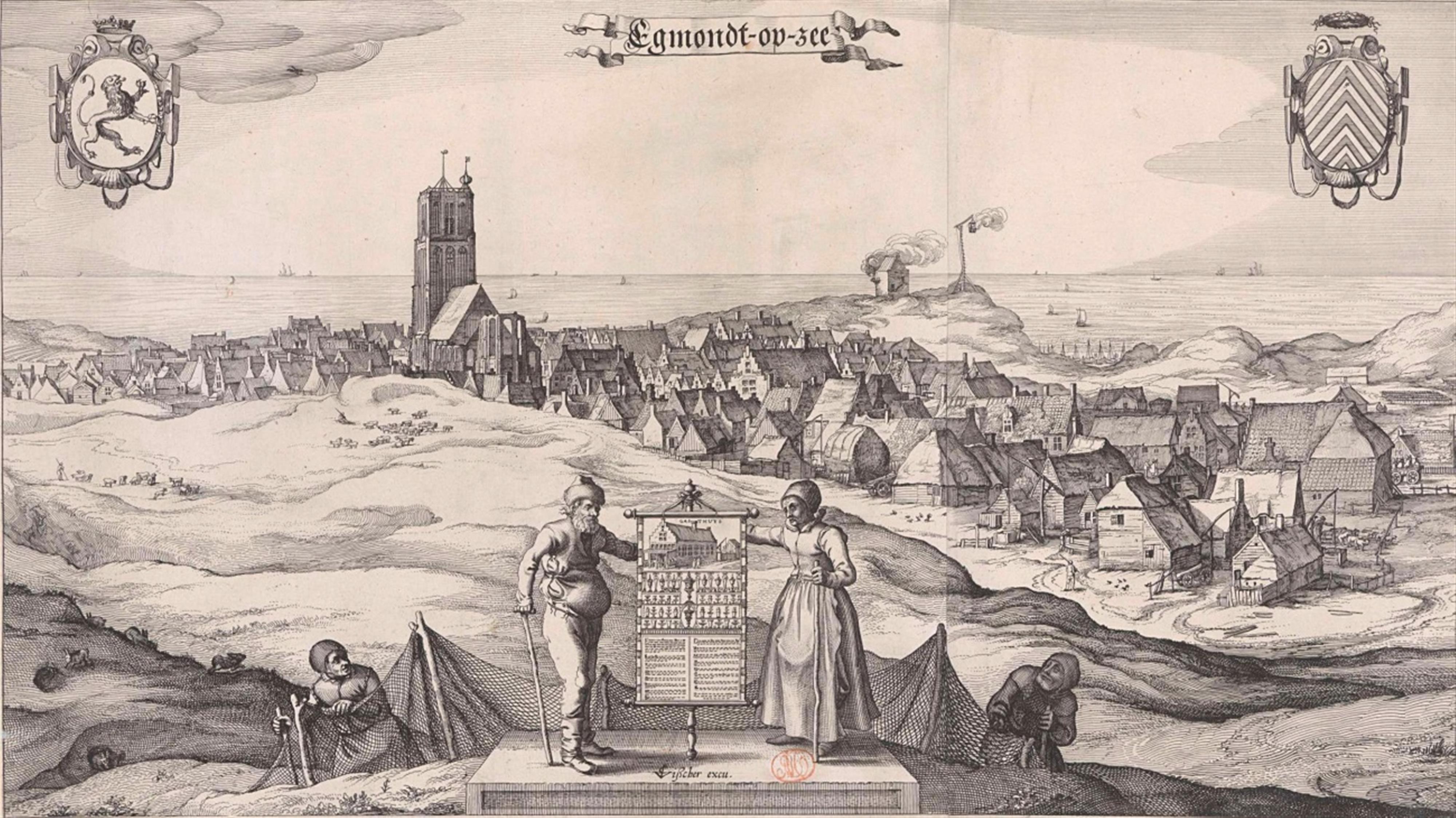Isaack van Ruisdael
A View of Egmond
Oil on panel. 65 x 84 cm.
Monogrammed lower centre: IVR.
The work shows a path winding upwards through the dunes past a small hillock with a signal mast protruding from its summit. On the left of the image we see a town with a church tower rising up in the centre, on the right the sea and coastline with a group of fishermen laying out their catch on the beach. This view of Egmond is monogrammed “IVR” and can be attributed to Isaack van Ruisdael via comparison with another work in a Dutch private collection bearing the same monogram.
The work in Netherlandish private ownership (RKD no. 201500088; cf. Slive 2001, op. cit. no. dub10) displays stylistic parallels to the present work in its overall composition and details. Both landscapes depict the same view of Egmond seen from the North East, and the landscape components - hills, coast and town - are similarly arranged. The present work shows a smaller section of the view and thus the hills and houses appear closer to the observer. However, the most obvious difference is the signal mast in the centre of the composition which is lacking in the above mentioned comparison piece. These signal masts were used to guide mariners before the invention of lighthouses. One such mast is already depicted in the same location in a view of Egmond by Claes Jansz. Visscher in the year 1615 (cf. illus. 1). Isaack van Ruisdael here depicts it lopsided and scantily held in place with a makeshift wooden support. Despite the differences in the two works, features such as the bright highlights to the dune, the haystack, the figural staffage (for example the figure carrying a basket) and the depiction of the grass reflect this artist's characteristic style.
The compositional similarity of this work to that in the Netherlandish private collection is remarkable for two reasons: The latter work is one of the exceedingly rare paintings which researchers have unanimously attributed to this artist. It is also a work which has been of paramount importance in the formation of Ruisdael's oeuvre and the definition of his artistic personality.
Isaack van Ruisdael was the father of the great landscape painter Jacob van Ruisdael and brother of the equally important Salomon van Ruysdael. He was also the victim of a great historical error. The 18th century art historiographer Arnold Houbraken described him simply as a maker of frames, and this demotion to a mere craftsman continued into the 20th century. Prominent researchers such as Abraham Bredius and Jakob Rosenberg, and later Wolfgang Stechow and Seymour Slive denied the existence of his artistic career, ascribing disputable works to his son Jacob. However, there were always doubts regarding this historical degradation: Works ascribed to the young Jacob van Ruisdael often failed to correlate with his artistic development, and there were discrepancies in many of the signatures. There is also archival evidence documenting Isaack van Ruisdael's artistic activity.
Kurt Erich Simon (Simon 1935, op. cit., passim) was the first to attempt to collate his oeuvre, the second tries being undertaken around 50 years later by Christopher Brown (Brown 1982, op. cit., passim) and Jeroen Giltaij (Giltaij 1992, op. cit., passim). At the latest it was these works which re-established Isaack van Ruisdael's reputation as an artist.
The painting in the Netherlandish private collection has always been presented as a central argument by supporters of Isaack van Ruisdael and is, as mentioned above, one of the few works broadly attributed to him. The present image oritinating from a West German private collection and the strong stylistic parallels to the Dutch piece in its signature, composition and details allows for the attribution to the oeuvre of Isaack van Ruisdael.
Provenance
Private ownership, West Germany.




